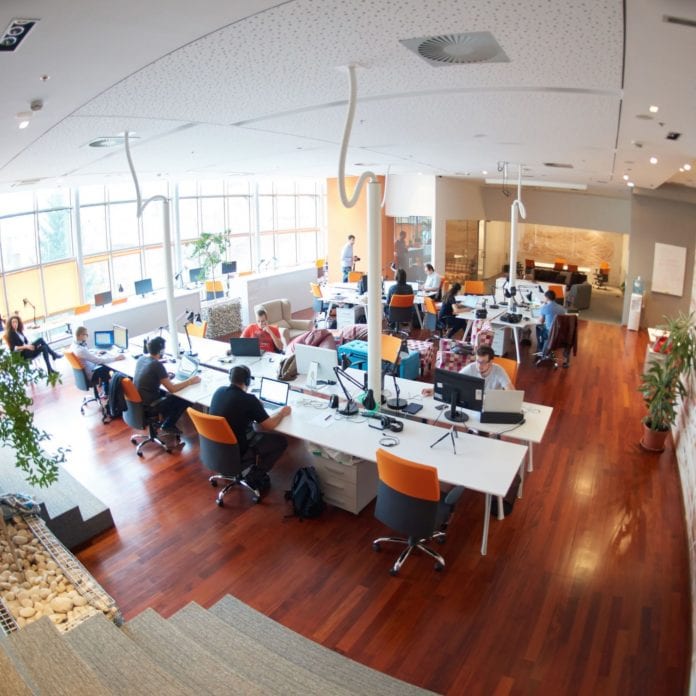Deutsche Telekom said private networks are easy to talk about, but hard to manage, at Hannover Messe 2019 last week, swatting away the perceived jeapordy for operators in the industrial 5G debate.
Adel Al-Saleh, member of the board at Deutsche Telekom and chief executive at T-Systems, said: “People underestimate what it takes to match a high-availability network with quality-of-service and service-level agreements that are fit for the factory. People understimate that. It is very interesting and exciting to say you can build and manage your own network. And people do say that.
“But to manage that network 24/7 – do you really have the resources and the configuration and the technology in the network to be sure you can put your production onto it? That is yet to be proven, I would suggest. We know how to do it. It is our bread and butter.”
Deutsche Telekom introduced its rival offer for industrial networking at the Hanover trade fair, which combines public and private network layers in the same licensed own spectrum. Antje Williams, executive programme manager for 5G at the German firm, said digital factories will require multiple spectrum bands to manage a range of machinery and processes.
“In general, the frequency doesn’t tell you how to use the spectrum. You can use any kind of spectrum for public [networks]. As an operator, we can use this spectrum for public usage, and we can also use the same spectrum for private networks,” she said.
German regulator BNetzA has already set aside 100MHz of spectrum in the 3.7G-3.8GHz band for German industrialists. Williams suggested industrial companies that set up in this spectrum will need more frequency options besides.
“The advantage we have is we can play with these frequencies. Certain frequencies have certain advantages. If you want to go through walls, for instance, high-frequency is no good – so you better have lower frequency in your portfolio,” she commented.

Al-Saleh rejoined: “I’ll give an example: a client makes a component, which is to be transported out of the factory, onto the highways and into the railr system. If you are isolated in your own private network, then you are going to lose track of it the moment it leaves your campus. You have to reconnect it to a different environment.”
He added: “Our solution provides seamless handover between the manufacturing floor, the production cycle, and onwards into the supply chain. We provide that.”
In conversation separately with Enterprise IoT Insights, Herbert Schüttler, vice president of 5G corporate customers at Deutsche Telekom, suggested the perceived jeapordy around private industrial networks is exagerrated.
“Yes, it look like a kind of competition, on one side. But if you look again, it is a chance for all of us. Because we are talking to the guys at Bosch and Siemens. There is no problem. We are organised [together] in 5G-ACIA (the alliance for connected industries). And the first thing is to bring together the IT and OT industries. Because, at the moment, the language aroudn quality-of-service and reliability is quite different,” he reflected.
It is the same with the network vendors, he said, despite their aggressive line on going direct to industry to deploy private networks; Deutsche is working with Ericsson, Huawei, and Nokia, inside and outside of 5G-ACIA, he said. He repeated the lines from Al-Saleh and Williams that private networks running in 3.7-3.8 GHz spectrum in Germany, which the local regulator has reserved for local enterprises, will not serve.
“Yes, it is possible these industrial players will build their own networks. But one spectrum band alone will not solve all of their problems. Because the propagation characteristics of low and high frequencies are very different. One piece of high frequency won’t cover it.”

The market will split at the beginning, Schüttler suggested. “Large enterprises like BMW and Siemens might be ready to run their own networks, perhaps. But there are lots of mid-sized manufacturers that don’t want anything to do with the running of mobile networks. In Germany, there might be 20, maybe 30, companies that will manage networks on their own. None of the others want to do it.”
The point is cellular networks, compared with Wi-Fi networks, are not cheap to build and not easy to manage. “Because of SIM authentication and security,” he said. There is the issue of device and software upgrades, and liaison with vendors and standards bodies, as well.
Deutsche Telekom’s solution, to offer public and private layers running in the same spectrum bands, means factories can allocate fast-lanes and access controls for critical communications, as required, and maintain a broad level of mobile broadband connectivity for general applications at the same time.
It will re-work the standard consumer airtime contract as an infrastructure-as-a-service proposition for industry. “The customer pays a monthly fee for infrastructure, and we operate it, and it doesn’t matter to us wheher they have five or 10 SIM cards on a private network, and whether they use one terrabyte or hundreds of terrabytes of data,” he said.
But he maintained the risks to operators are over-played. Both sides need to find common ground, to define new working models for industrial LTE and 5G networks. “The first step is to go on the shopfloor, connect the machines, and learn together. Because we are talking reliability, and whether it is two nines or four nines after the comma. But the question is about the use cases, actually,” he explained.
Industry, itself, should scope out its requirements, first, before bowling headlong into deployments.
“Everyone wants 5G NR. Industry says, ‘telecoms operators don’t build networks for us’. This is wrong. We do. But we need to know their requirements. They say they want private networks, they want 5G networks. And we say, ‘okay, well, what are you requirements around bandwidth and latency?’ And they don’t know the answer. This is what we’re discussing with them in 5GACIA.”
He added: “At the end of the day, 90 per cent, even 95 per cent, of use cases can be served today with LTE. It is only ultra relaibiity and high bandwidth that really needs 5G. And there is no hardwware yet, on the modem side, and the 5G core networks are not specificed. It is not always a discussion about technoloigy, but rather one about whether you’re ready to start, and ready to plan.
“Both sides need to learn what it means to use cellular networks in the OT industry, because we are not experienced with it. We are building public networks, which are for everybody. On the OT side, we will have smaller networks, with highly specific requirements.”


